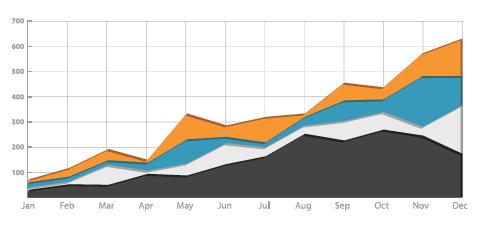Adopting an Integrated Workplace Management System (IWMS) is a huge investment in both time and money. Increased productivity, lower business expenses, increased efficiency, and a well-informed workforce is just a few of the benefits of implementing such technology. The benefits stand to far outweigh the costs, but only if implementation is done strategically and with the end goals in mind throughout the entire process. Since we believe that knowledge is power, we wanted to share with you the 5 most common mistakes made by first-time IWMS investors and how you can avoid making the same blunders.
1) Not Communicating the Value to Key Stakeholders and Users From the Beginning
The purpose of your new facilities management software is to enhance organizational processes and increase communication and productivity amongst the staff, particularly the facilities management team.  How will you achieve these goals, if your team refuses to use the tools, though? Remember, change is difficult for everyone. Even if your employees know certain processes need improvement, if you do not show the value of these new practices, you will find that your team, and the rest of the workforce for that matter, will fail to understand why change is needed. It is, therefore, your job to show change as a positive, in which the end results will far outweigh the initial shifts associated with a new software system.
How will you achieve these goals, if your team refuses to use the tools, though? Remember, change is difficult for everyone. Even if your employees know certain processes need improvement, if you do not show the value of these new practices, you will find that your team, and the rest of the workforce for that matter, will fail to understand why change is needed. It is, therefore, your job to show change as a positive, in which the end results will far outweigh the initial shifts associated with a new software system.
One of the most common flaws management makes during software implementation is not involving their workforce in the process from the beginning. It seems easier to assume the end users only need to know the “how,” ignoring the “why” behind adopting new solutions. You can anticipate a sales representative will debate the benefits of a new product before buying in. Why would you expect your workforce to react any differently? Yet management commonly makes this mistake. By involving your team in the re-vamp process, they already create a vested interest in the product(s) you’re asking them to use day in and day out.
For the successful implementation of a FM software solution, management must involve their FM team and possibly the entire workforce from the get-go. By questioning the staff and department heads about what processes must be improved upon and what are actually working currently, you make them part of the solution. You not only prepare them for the impending changes, you also ensure the new tool is built with the end-users in mind. By then opening the line of communication with your FM team, you share “the value of the change and establish its legitimacy with the staff members who will be responsible for its application.” -Chris Mumford Executives are interested in the value in terms of ROI, while your employees realize the value through time saved, increased communication, and ease of use. You will gain more support and encounter less opposition by involving your key players during the consideration stage. This gives them an opportunity to feel as though they are part of the solution, offering them time, as well as incentive, to acclimate themselves to the changes.
2) Failing to Identify Organizational Goals
Another aspect that should be addressed in the consideration stage is the overall goals of the organization and how this software investment fits into these goals. Your IWMS should be part of the solution, aiding your workforce in working towards both individual and organizational goals. Therefore, it is critical that management communicate clear-cut goals to the software vendor when identifying the solution that best fits your needs.
To further support buy-in of your software implementation, your staff must have a firm understanding of said goals and the role the new FM software will play in helping them achieve these goals. Many management teams have found success through software buy-ins by directly tying incentive programs to use of the new tools. To achieve maximum ROI and employee support, facility teams should maintain involvement well after the implementation process is complete.
3) Minimizing the Importance of Mobility
 With much of our workforce on the go at any given time, no company can afford to overlook the importance of mobility. Your new IWMS must support your employees’ mobile needs, both in and out of the office. If the tool isn’t convenient and easy to use, it will, inevitably, be abandoned.
With much of our workforce on the go at any given time, no company can afford to overlook the importance of mobility. Your new IWMS must support your employees’ mobile needs, both in and out of the office. If the tool isn’t convenient and easy to use, it will, inevitably, be abandoned.
When choosing the right facility management software tool for your organization, keep these mobility needs in mind. Even if you are not highly mobile right now, where does it fit in to the organization’s future goals? Remember, a collaborative environment is a productive one and access to the right tools, regardless of location, encourages that collaboration.
4) Taking on More Than is Necessary
As previously discussed, management should work closely with every department throughout the consideration stage to establish clear-cut goals, both now and moving forward. This will aid your team in determining what current processes should be abandoned for new ones and where the new software fits in to the equation.
Many FM software solutions are now offered in modules and can be customized to meet your growing needs. While it is tempting to purchase every module pertinent to your company right away, this often proves to be a mistake. The most effective approach is to start with the processes that are currently the most ineffective, and work your way backwards. As your needs and goals are met, more modules can be added. This ensures that your workforce isn’t overwhelmed with too much change at once, and waiting also gives time to identify additional needs that might not have been considered before.
The primary goal is to build a user-friendly system that enhances each individual’s job and, ultimately, increases productivity. Trying to roll out an entirely new system all at once often backfires as your staff becomes overwhelmed and abandons ship altogether. The end result- a FM software system that falls short of accomplishing organizational goals.
5) Improper Training
As the facilities manager, it is important for you to remember that your workforce is comprised of varying computer skill levels. Even the simplest of software programs may prove challenging to those with little or no computer experience. We can certainly understand the excitement surrounding the implementation of your new tool, but don’t allow that enthusiasm to force you into one of the biggest mistakes. Even your FM team would benefit from more training and a smoother learning curve. No one wants to feel as if they have been thrown into a situation in which they are underprepared and overwhelmed by unrealistic expectations. Align your company with a software vendor who will see your team through proper training, as this can make or break the potential for employee buy-in. Then, use your FM team to help disseminate the new information to the rest of the staff and employees.
Allow your workforce the time and resources to go through the learning process, breaking down the fear through training sessions and repetitive practice with dummy data and practice. These training sessions are also a great opportunity to gain valuable insight into user preferences and in identifying features that might need to be further enhanced or abandoned. “Fine-tuning new software in this way can go a long way toward creating buy in. In a Right Management survey of more than 28,000 employees from 15 countries around the world, ‘My opinions count’ was ranked as the third most important driver of employee engagement.” Ultimately, promises of higher productivity and cost savings will fade away into missed opportunities and a frustrated c-suite if you don’t achieve buy-in from your staff. Invest in thorough, proper training to ensure your software implementation doesn’t become just another empty promise.
Defining the main areas of consideration should help in the planning and implementation process for an IWMS. Of course, you might have other questions and concerns, specific to your organization. Create a checklist to refer to when discussing these proposed changes with C-Suite, your FM team and the vendor to make the process the smoothest and most productive for all involved.
The goal of your facilities team is to ensure the workforce has the tools necessary to perform their jobs at peak levels. This requires not only identifying and implementing such tools, but also ensuring the employees are equipped with the knowledge and training to utilize the system to its fullest potential. Ultimately, this means involving them in the consideration process, all the way through to completion, and beyond. Once implementation is complete, management teams who continue to support the staff as they adapt to this change will achieve maximum buy in and the highest return on investment.
[blog_cta id=’0acaa177-4b6f-417d-a1c1-47e4ac5c2355′]
